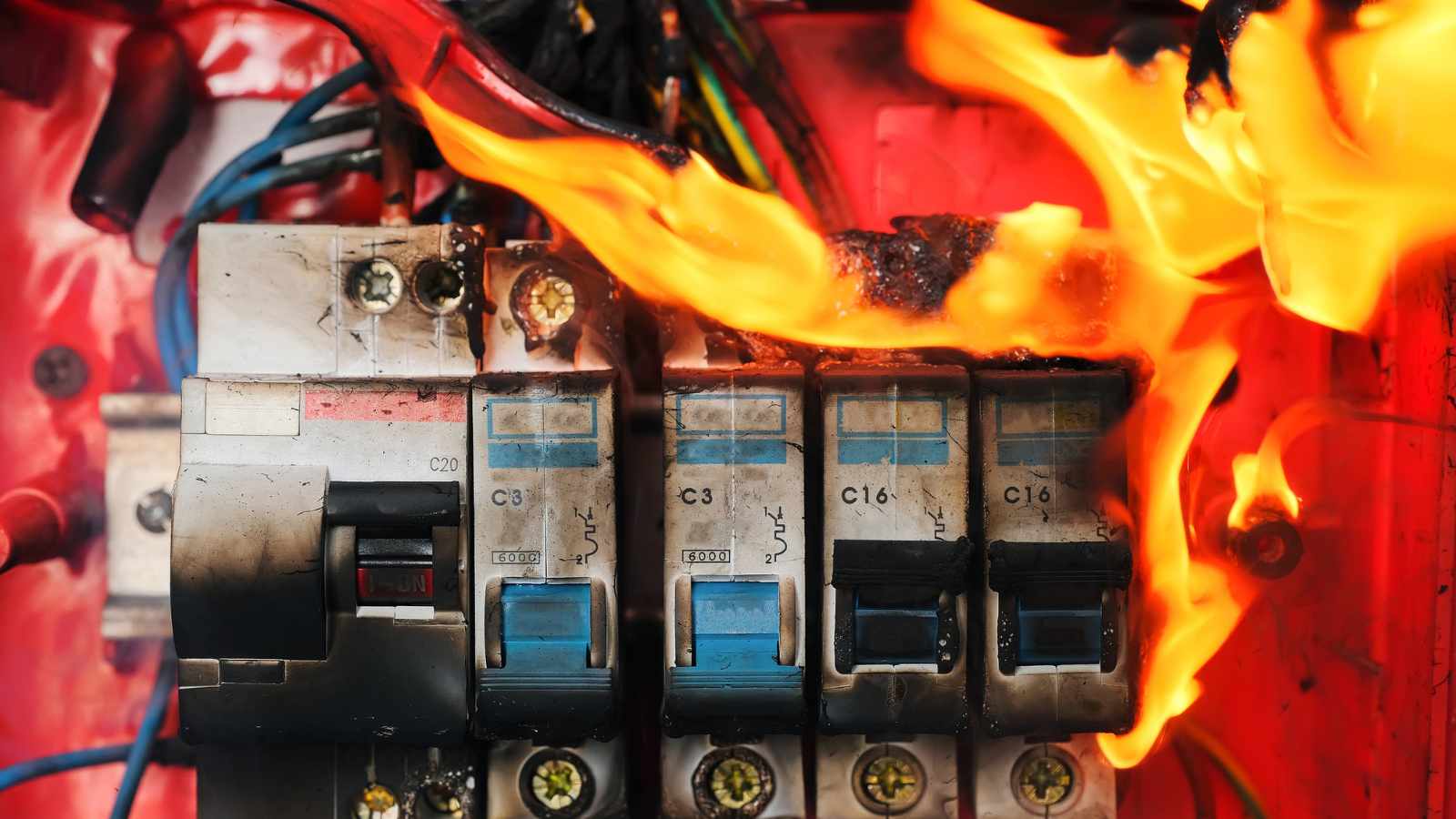These Common DIY Electrical Mistakes Could Destroy Your Home

Electrical mistakes are far more destructive than most homeowners realize. According to a report by the National Fire Protection Association (NFPA), electrical distribution and lighting equipment are involved in approximately 31,647 home fires in the United States every year, leading to an estimated 425 deaths, 1,279 injuries, and more than $1.6 billion in property damage
The U.S. Fire Administration (USFA) further reports that electrical malfunctions are one of the top three causes of residential fires nationwide. These incidents often begin with hidden wiring problems, overloaded circuits, loose connections, or improper modifications, many of which stem from DIY electrical work performed without proper training.
When homeowners attempt repairs or upgrades without understanding load requirements, wire ratings, or grounding protocols, they often remove or weaken the very safeguards designed to prevent shocks, overheating, and structural fires. Here are the most common and dangerous DIY electrical mistakes and how they can jeopardize your home’s safety.
Overloading Circuits

Circuit overload occurs when a circuit carries more electrical current than it is rated to handle. The NFPA identifies overheating of wiring and overcurrent conditions as frequent initiation points in residential electrical fires. Overloading often happens when multiple high-wattage appliances, such as space heaters, window air conditioners, or hair dryers, are used on the same circuit, or when a DIYer adds outlets without calculating the circuit load.
Overheated wiring behind walls can reach ignition temperatures without any visible warning signs. If a faulty or incorrectly installed breaker fails to trip, the wiring may continue to heat until insulation breaks down, leading to arcing, smoldering, and eventual ignition.
Using the Wrong Wire Gauge
Each wire gauge is designed to carry a specific maximum current. A thinner wire carrying more current than it is rated for will heat up rapidly. The National Electrical Code (NEC) specifies that 14-gauge wire must be used only on 15-amp circuits, while 12-gauge wire is required for 20-amp circuits. When DIY repairs mix gauges, such as adding 14-gauge wire to a 20-amp circuit, the smaller wire can overheat long before the breaker trips.
Mismatched wire gauge is linked to insulation breakdown and arcing, both of which significantly elevate the risk of electrical fires. These failures are often hidden inside walls, making them especially dangerous because homeowners may not see or smell the damage until a fire has already begun.
Improper Grounding

Grounding provides a safe path for fault current and is essential for preventing shocks and equipment damage. Both OSHA and the CDC identify improper grounding as one of the leading causes of electrical injuries in homes and workplaces. Faulty grounding can cause metal components such as appliance housings, electrical boxes, or light fixtures to become energized, posing a severe shock hazard.
A common DIY mistake is replacing two-prong outlets with three-prong outlets without adding a proper ground path. This creates a false sense of safety while leaving appliances unprotected.
Loose Electrical Connections
Loose electrical connections are a leading cause of residential arcing. Electrical arcs can reach temperatures over 10,000°F, which is hot enough to ignite surrounding wood framing, insulation, or dust. Loose terminals, improperly twisted splices, and poorly installed wire nuts all create the gaps where arcing occurs.
Back-stabbed outlet connections, where wires are pushed into spring-loaded holes instead of secured under screw terminals, are particularly prone to failure. Over time, heating and cooling cycles can loosen these connections, causing intermittent arcing behind walls. The faults often smolder for hours unnoticed before igniting surrounding materials.
Unsafe DIY Splicing

Wire splicing must always be done inside a code-approved junction box to contain heat and sparks and to protect the splice from mechanical damage. The NEC requires junction boxes for all splices, yet open-air splicing remains one of the most commonly observed DIY violations.
The CPSC warns that uncontained splices significantly increase the risk of fire because exposed wires are more likely to arc into wood studs, insulation, or other combustible materials. Using tape alone, twisting wires together without connectors, or hiding splices behind drywall all create conditions where faults can rapidly escalate into fires.
Installing the Wrong Type of Breaker
Modern electrical codes require a combination of breaker types to protect against different hazards. GFCI breakers guard against shock hazards, especially in areas near water, while AFCI breakers detect arcing faults—one of the key contributors to home fires, according to data from the CPSC and NFPA. Many living areas now require dual-function breakers that combine both protections.
Installing a standard breaker where an AFCI or GFCI is required eliminates one of the most important layers of home safety. Incorrect breakers may fail to detect dangerous faults, allowing overheating or arcing to continue unchecked. This is why modern building codes mandate specific breaker types for bedrooms, kitchens, bathrooms, laundry areas, and outdoor circuits.
Safety Guidelines and Prevention

Electrical safety organizations consistently emphasize that most electrical work should be performed by trained professionals. Basic homeowner tasks may include changing light bulbs or testing GFCIs, but any work involving wiring, breaker panels, or grounding requires more advanced knowledge and inspection.
The NFPA and CPSC both note that proper installation is the single most effective way to prevent electrical fires, and avoiding DIY errors is key to maintaining that protection.
When to Call a Licensed Electrician
Electrical professionals undergo extensive training and are equipped to evaluate circuits, load capacity, grounding, and potential hidden hazards. Licensed electricians use tools such as thermal imaging cameras, voltage analyzers, and insulation resistance testers—devices that homeowners typically do not possess.
Experts recommend calling a licensed electrician if you experience frequent breaker trips, flickering lights, hot outlets, burning odors, ungrounded outlets, or any signs of overheating or arcing.
Because the cost of professional electrical work is far lower than the potential damage from an electrical fire, relying on trained professionals is one of the most effective ways to protect your home and family.
Read the original article on Crafting Your Home






